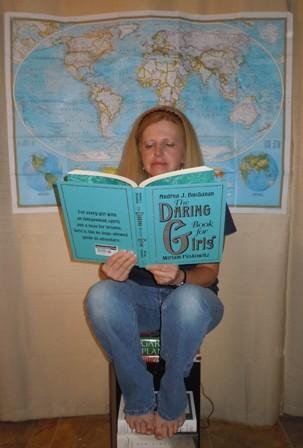Cheryl Hughes: Seed Bank
Often, my daughter says to me, in exasperation, “Why is she like this!” referring to her daughter’s less than compliant behavior, which is exactly like the less than compliant behavior she exhibited as a little girl. “They don’t call it reproduction for nothing,” I usually say, which is a variation on the old adage, “the apple doesn’t fall far from the tree.” There is so much we carry around inside of us, both good and not so good, that is inevitably passed on to our progeny. “Be fruitful and multiply,” God said to man in the first chapter of Genesis, because he wanted more of us. Everything on this earth holds the seeds for more of its kind.
This week, on “Science Friday,” a program on NPR, they did a segment on seed banks, which are repositories for the seeds of rare species of plants. They are gene banks that protect biodiversity while they guard against natural disasters, disease and war.
Seeds are an interest of mine, so I knew about the most famous seed bank, located in Norway. Svalbard Global Seed Vault is built inside a sandstone mountain in a man-made tunnel on the frozen island of Spitsbergen. The largest seed vault is the Millennium Seed Bank near London, England. It is an underground vault, 100 times bigger than Svalbard. The Millennium bank has the lofty goal of storing every plant species possible, reaching 10% in 2009, and hoping for 25% by 2020 (Kew.org).
The seed bank I didn’t know about, the one featured on “Science Friday,” was the Vavilov Institute of Plant Industry. Nikolai Vavilov (1887 – 1943) was a Russian geneticist and botanist who, through expedition, collected seeds from all over the world. His was one of the first seed banks and was set up in Leningrad (now St. Petersburg). If you look at the date of Vavilov’s death (1943) and you add to that the information that he was based in Leningrad and you know anything about the history of WWII, you have a pretty good idea of how Nikolai Vavilov died; but more importantly, you would be amazed that the seed bank survived and is still in existence today.
Vavilov and a handful of other botanists connected with the bank were protecting seeds in Leningrad during the dark period of time in which the Germans and the Third Reich laid siege to the city. The siege lasted for 28 months, during which time some of the inhabitants turned to cannibalism in order to survive. Many more starved to death, including Vavilov and his associates, all the while surrounded by seeds that could have saved their lives, but would have possibly been lost to future generations forever. They chose to preserve the seeds, which are still there today.
Each spring, when I plant White Velvet okra and Creel Cream Crowder peas, seeds that have been in my husband’s family for over one hundred years, I think about all the people before me who have planted the ancestors of these seeds and saved the progeny for those who would come after them, of whom I am one.
Everything on this earth holds the seeds for more of its kind. So much has been preserved for us by the sacrifice of others. We really are so interconnected—this family of man. It never was just about me or just about you. It has always been about us, all of us, and it is our responsibility to look after one another and preserve what preserves us.
- Log in to post comments



























